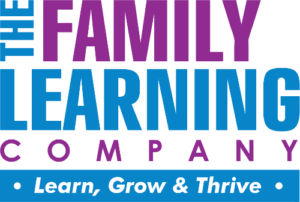Developing the Science of Reading + Writing

Two crucial reports, Preventing Reading Difficulties in Young Children and the National Reading Panel, emphasized explicit teaching in six literacy areas: phonemic awareness, decoding, vocabulary, fluency, comprehension, and writing. Mastery by third grade, combined with enjoyable reading, fosters proficient skills. Explicit phonics instruction, unlike whole language approaches, significantly accelerates reading progress. Nonetheless, only 36% of American students achieve proficiency in high school due to inadequate phonemic awareness and decoding skills. Solution lies in explicit instruction, ample practice in literacy components, and access to engaging content. Quality literacy software supplements teacher guidance, facilitating mastery in these crucial skills for learners of all ages.
Twenty years ago, the U.S. government commissioned a project to definitively recommend the best approach to teaching literacy. Only one third of the students in American schools were learning to read proficiently, and their lack of literacy was preventing their further education. In 1998, the U.S. National Research Council released Preventing Reading Difficulties in Young Children [Snow, C.E., Burns, M.S., and Griffin, P. (Eds.). (1998). Preventing reading difficulties in young children. Washington, D.C.: National Academy Press.] defining instructional solutions to the problem. In 2000, the Report of the National Reading Panel [National Institute of Child Health and Human Development. (2000), Washington, D.C.] was published describing which methods of teaching reading are proven to work by rigorous scientific studies. Both reports concluded that while reading as much as possible, students should be explicitly taught skills in six areas:
- Phonemic Awareness – an understanding of the sounds in their language and how they form words,
- Decoding – the ability to figure out unfamiliar words, and to learn to read them automatically,
- Vocabulary – knowledge of an adequate number of words to understand text passages,
- Fluency – the ability to read quickly and without conscious attention,
- strong>Comprehension – the ability to understand the direct meaning of text, and also its implications and intention, and finally the ability to perform analysis on text and
- Writing – the ability to express their feelings, thoughts and understanding in various forms of written expression.
Ideally, learners should master phonemic awareness by the end of Kindergarten and decoding by the end of 3rd grade [Joseph K. Torgesen. (2005) Preventing Early Reading Failure.] while actually reading for pleasure and for knowledge. Then, learners read material of interest to them [Torgesen, J. K., Houston, D. D., Rissman, L. M., Decker, S. M., Roberts, G., Vaughn, S., Wexler, J. Francis, D. J, Rivera, M. O., Lesaux, N. (2007). Academic literacy instruction for adolescents: A guidance document from the Center on Instruction. Portsmouth, NH: RMC Research Corporation, Center on Instruction.] while being taught to improve their vocabulary, fluency and comprehension abilities until they can easily read, understand and analyze any text. From the time they can hold a pencil, students also learn to share their perspectives, understanding and ideas in writing.
This approach stands in contrast with “whole language” approaches to reading instruction which exclusively emphasize the reading of important content and focus on using context clues to discern the meaning of text. This approach has been thoroughly debunked by data showing that explicit instruction in phonics combined with text-based language activities (reading) generates significantly faster progress in reading than the whole language approach. [Camilli, G., Vargas, S., and Yurecko, M. (May 8, 2003). Teaching Children to Read: The fragile link between science and federal education policy. Education Policy Analysis Archives, 11(15).]
Unfortunately, today, it is still true that only 36% of students in American schools ever become proficient readers by the time they enter high school. [National Center for Education Statistics. (2013). 2013 Reading Assessment Report Card.] The vast majority lack adequate phonemic awareness and decoding skills, which prevents them from mastering higher level reading skills. [Joseph K. Torgesen. (2005) Preventing Early Reading Failure.] Few continue to build their reading vocabularies so that they can take on more complex, interesting text. They do not become fluent readers, and they do not learn to fully comprehend text so that they can write about it.
The solution is clear: provide developing readers of all ages with explicit instruction and plenty of practice in the six components of literacy while providing access to interesting content, until they have become proficient readers and writers. High quality literacy software provides the practice to complement teacher instruction so that students learn to mastery.
Click here to see how research plays a central part of Interactive Family Literacy
Here is a listing of research studies on the Science of Reading.
